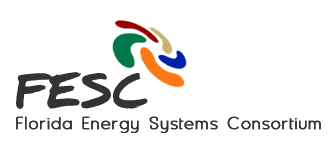| ACH | air changes per hour | The American Society of Heating, Refrigerating and Air Conditioning Engineers (ASHRAE) standard, "Ventilation for Acceptable Indoor Air Quality" (ASHRAE 62) recommends that houses have 0.35 Air Changes per Hour (ACH). Older drafty houses can have infiltration rates of 1.0 to 2.5 ACH. Standard homes built today are tighter and usually have rates from 0.5 to 1.0 ACH. New, energy efficient homes may have 0.35 ACH or less. |
| AFUE | annual fuel utilization efficiency | The heating efficiency of a gas furnace is measured by the Annual Fuel Utilization Efficiency (AFUE), a rating which takes into consideration losses from pilot lights, start-up, and stopping. The minimum AFUE for most furnaces is now 78-80%, with efficiencies ranging up to 97% for furnaces with condensing heat exchangers. |
| AHU | air handler unit | Central heating and air conditioning systems have a component called an Air Handling Unit (AHU). The AHU is typically located in the attic, garage, or most optimally within an interior conditioned space like a specially designed hall closet, sometimes called the AHU closet. The advantages of a locating an AHU within a conditioned space include: (1) it's surrounded by a more benign and tightly controlled surrounding environment; (2) the central location can minimize duct work lengths and optimize air flow; (3) it offers easier access for maintenance; (4) any air leaks flow to already conditioned spaces; and (5) any condensate drain or drip pan water leaks are easier to catch and control with the unit in more commonly seen areas. |
| AL | air leakage | Air Leakage (AL) on window ratings is usually quoted as a measurement of the air in cubic feet per minute passing through each square foot (cfm/ft2) of a window assembly. Lower values are better, and a typical range runs from 0.1 to 0.3, although casement windows can achieve as AL as low as 0.01 cfm/ft2. |
| argon | argon gas | Argon gas is an inert and safe atmospheric gas that is denser and heavier than the surrounding mixed air. Argon gas can be added to the sealed interior of double and triple pane energy efficient windows in colder climates due to its insulating benefits. However, in hot-humid climates such as throughout Florida, the benefits of argon and related insulating gases are significantly reduced. Thus, most homeowners can save money by avoiding the argon gas filled windows and focusing on the low-E functionality to reduce solar heat gain. |
| ASHRAE | American Society of Heating, Refrigerating, and Air-Conditioning | The American Society of Heating, Refrigerating, and Air-Conditioning Engineers (ASHRAE) standard, "Ventilation for Acceptable Indoor Air Quality" (ASHRAE 62) recommends that houses have 0.35 Air Changes per Hour (ACH). Older drafty houses can have infiltration rates of 1.0 to 2.5 ACH. Standard homes built today are tighter and usually have rates from 0.5 to 1.0 ACH. New, energy efficient homes may have 0.35 ACH or less. |
| CFL | compact fluorescent lamp | Compact Fluorescent Lamp (CFL) is a type of bulb that produces light by passing an electric arc through a mixture of an inert gas, such as argon, and a very small amount of mercury. The mercury radiates ultraviolet energy that is transformed to visible light by the phosphor coating on the bulb. A combination of lower energy usage per lumen (a measure of the total visible light emitted by a source), lower heating load (the amount of waste heat that escapes from the lamp), and longer lamp life means that fluorescents have a lower total operating cost than incandescent lamps, despite their higher initial cost. |
| CR | condensation resistance | Condensation Resistance (CR) on window ratings is a number between 0 and 100 which provides a relative comparison of the window's resistance to condensation (i.e., liquid water accumulation) forming on its interior surface. The larger the CR number the better. |
| CU | compressor unit (or) condensing unit | The Compressor Unit (CU), also sometimes called the Condensing Unit (CU), of an HVAC system is the collection of components located outdoors with a fan, compressor, and condensing coils. These technologies work together to pressurize a refrigerant with the compressor and blow air across the condensing coils with a fan to cool the refrigerant which works in tandem with the Air Handling Unit (AHU) located indoors and connected to the ductwork. |
| EF | energy factor | Energy Factor (EF) is a general measure of the overall efficiency of common household appliances. (e.g., water heaters, dishwashers, clothes washers, and clothes dryers). However, the metric is defined differently for each as follows: Water Heater = EF (Energy Factor); Dishwasher = EF (Energy Factor); Clothes Washer (Residential) = IMEF (Integrated Modified Energy Factor); Clothes Washer (Commercial) = MEF (Modified Energy Factor); Clothes Dryer = CEF ( Combined Energy Factor). |
| GHG | greenhouse gases | Greenhouse gases (GHGs) are a special category of gases which trap heat within the atmosphere and regulate the global climate. |
| HET | high-efficiency toilet | A high-efficiency toilet (HET) has an effective flush volume of ≤ 1.28 gallons (or 4.8 litres). As of the Summer 2015, the Maximum Performance (MaP) Testing Program database lists dozens of manufacturers and approximately 1,500 models of single-flush HETs. Move beyond old-fashioned and modern code-minimum "low-flow" toilets (at 1.6 gallons) and upgrade to an HET today! |
| HSPF | heating season performance factor | The heating efficiency of a heat pump is measured by its Heating Season Performance Factor (HSPF), which is the ratio of heat provided in Btu per hour to watts of electricity used. This factor considers the losses when the equipment starts up and stops, as well as the energy lost during the defrost cycle. Typical values for the HSPF are 6.8 for standard efficiency, 7.2 for medium efficiency, and 8.0 for high efficiency. Variable speed heat pumps have HSPF ratings as high as 9.0, and geothermal heat pumps have HSPFs over 10.0. The higher the HSPF, the more energy efficiency the heat pump. |
| HVAC | heating, ventilating, and air conditioning | The Heating, Ventilating, and Air Conditioning (HVAC) system of a building is the sum total of components necessary to provide space conditioning for interior rooms in order to comfortably control the indoor climate in all seasons regardless of the outdoor weather. |
| lamp | lamp | A "lamp" is the term used in the lighting industry to describe what is commonly referred to by consumers as a light bulb. There are four primary families of lamps: (1) incandescent (which includes halogens); (2) fluorescent (which includes CFLs); (3) high intensity discharge; and (4) solid-state (which includes LEDs). |
| LED | light emitting diode | Light Emitting Diodes (LEDs) are very small electrical devices that produce light through the semi-conducting properties of its metal alloys. Light emitting polymers, like organic LEDs (OLEDs), are composed of small molecules or polymers shaped in the form of a film or transparent layer that emits light. Both LEDs and OLEDs are categorized as solid-state lighting (SSL). |
| low-E | low-emissivity | Low-emissivity (low-E) coatings contain a metal oxide applied to one pane of a glazed surface (e.g., windows, doors, and skylights) to reflect solar radiant energy back toward the outdoors, rather than absorbing and re-emitting the energy. To prevent potential damage and degradation to the low-E coating, they are located along an interior surface of a doubled or triple paned glazing surface. Low-E windows designed for hot-humid climates like Florida are called low-solar-gain or spectrally selective. These windows aim to allow a high transmission of visible light; to achieve significant savings in solar heat gain without appearing dark inside. |
| MaP | Maximum Performance | The Maximum Performance (MaP) Testing Program was developed in 2003 to provide rigorous independent third-party evaluation of the performance of toilets. The MaP rating system is highly respected, widely endorsed, updated monthly, and provides free consumer information on over 3,100 tank-type toilets. The University of Florida recommends that consumers only purchase high-efficiency toilet (HET) models that have been voluntarily tested by the MaP. |
| MEF | modified energy factor | The Modified Energy Factor (MEF) measures the energy used during the clothes washing process, including machine energy, water heating energy, and dryer energy. The higher the MEF, the more efficient the clothes washer. However, MEF is defined differently for residential versus commercial clothes washers as follows: Clothes Washer (Residential) = IMEF (Integrated Modified Energy Factor); Clothes Washer (Commercial) = MEF (Modified Energy Factor). |
| Net Metering | net metering | Solar PV net metering is the process by which a utility records the amount of electricity produced by the renewable energy system (in kWh) and deducts this value from the amount consumed by the building and only bills the utility customer the "net" difference that remains after deductions. Since 2008 (25.6.065 F.A.C. and Florida State Statute 366.91), the Florida Public Service Commission (PSC) has required that utilities offer net metering for all Floridians. For more information see the DSIRE Florida Net Metering summary. |
| PV | photovoltaics | Electricity can be created in different ways from the power of the sun, but one of the most common is through photovoltaic (PV), or light-electricity, cells. Individual PV cells (typically in crystalline silicon or thin film materials) are arranged into larger panels and wired into an even larger complete solar PV system. |
| R-value | resistance (R-value) | Insulation is rated in terms of thermal resistance, called R-value, which indicates the resistance of the insulation material to heat flow across its structure. The higher the R-value, the greater the reduction in heat flow and thus the greater the insulation effectiveness. The R-value is additive across layers and depends on the type of materials, their thickness, and their density.
(NOTE #1): My Florida Home Energy recommends upgrading to R-38 insulation in all new and existing residential attics. R-Values higher than R-38 in Florida are typically unnecessary and have a poor return on the investment.
(NOTE #2): My Florida Home Energy recommends adding R-11 (for 2x4 walls) or R-19 (for 2x6 walls) in all new residential construction. However, it is not typical to upgrade the R-Value of the walls in existing homes as it offers a poor return on the investment. |
| SEER | seasonal energy efficiency ratio | The cooling efficiency of a heat pump or an air conditioner is rated by the Seasonal Energy Efficiency Ratio (SEER), a ratio of the average amount of cooling provided during the cooling season to the amount of electricity used. National legislation mandates a minimum SEER 14 for all units manufactured after January 1, 2015 and the Florida Building Code mandates the installation of a minimum SEER 14 for single-phase air-cooled air conditioners less than 65,000 Btu/hour after June 30, 2015. Efficiencies of some units can be as high as SEER 23.0. |
| SHGC | solar heat gain coefficient | The Solar Heat Gain Coefficient (SHGC) of a glazed surface (e.g., windows, doors, and skylights) measures how well heat from sunlight is blocked from passing outdoors to indoors. SHGC values range from 0.00 to 1.00, and the lower the SHGC, the lower the heat gain through a glazed surface. A low SHGC is especially important in Florida's hot-humid climate as it blocks portions of the invisible (ultraviolet and infrared) wavelengths of our ample sunlight from warming interior surfaces (e.g., floors and furniture) through the solar radiant energy transfer through glazed surfaces. |
| SHR | sensible heat ratio | The Sensible Heat Ratio (SHR) designates the portion of the cooling load for reducing indoor temperatures (sensible cooling). For example, in a HVAC unit with a 0.70 SHR, 70% of the energy expended by the unit goes to cool down the temperature of indoor air. The remaining 30% goes for latent heat removal - taking moisture out of the air in the building. In Florida's hot-humid climate, systems that deliver less than 30% latent cooling may fail to provide adequate dehumidification in the summer. |
| SSL | solid-state lighting | Solid-State Lighting (SSL) devices have no moving parts, are built entirely from solid materials, carry electrons within the solid materials, and are produced within the same factories and to the same physical principles as other solid-state electronics, such as computer chips. |
| U-factor | U-factor | Somewhat similar to the R-value for insulation materials, the U-factor of a glazed surface (e.g., windows, doors, and skylights) measures how well heat is prevented from escaping. U-factor ratings typically range from 0.20 to 1.20, with lower numbers representing more efficient glazed surfaces. |
| VT | visible transmittance | Visible Transmittance (VT) is the decimal percentage of light that passes through a window. A VT of 1.0 allows 100% of the visible light to pass through while a VT of 0.50 allows only 50% (or half) of the visible light to pass through. Human eyes generally do not perceive the difference of slight to moderate decreases in VT such that a VT greater than or equal to 0.70 is considered good while a VT less than 0.50 is considered too low and is undesirable. |




